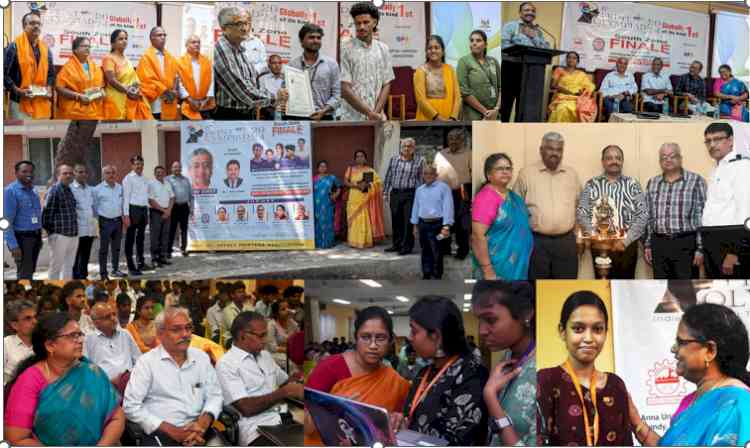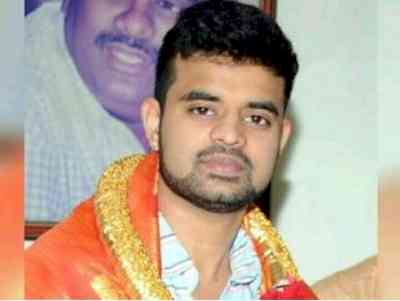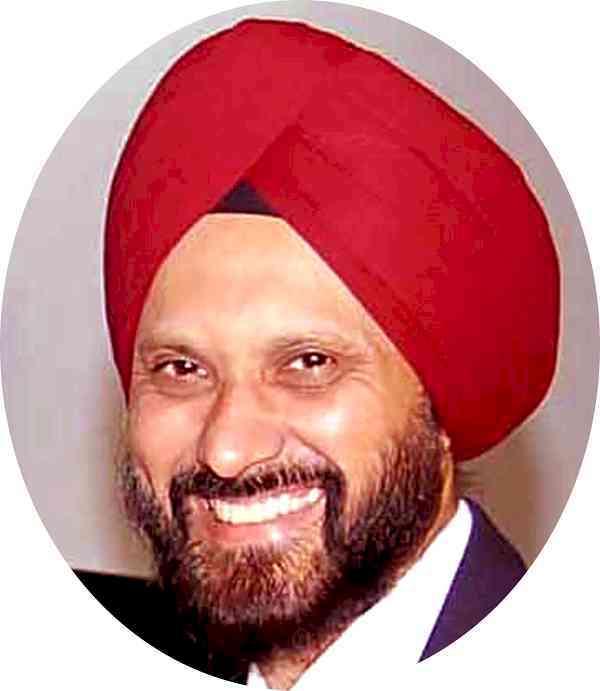In Ludhiana, Dr. Ajit Sood said, North India under high prevalence areas for Hepatitis C
Author(s): City Air NewsTo create awareness and sensitize people on need and innovative ways of screening for hepatitis, doctors, hospitals, voluntary and non-government organisations (NGOs) and other stakeholders have joined hands to...


To create awareness and sensitize people on need and innovative ways of screening for hepatitis, doctors, hospitals, voluntary and non-government organisations (NGOs) and other stakeholders have joined hands to launch a massive campaign in Northern region, especially Punjab where prevalence of Hepatitis is high. A massive campaign with ‘No Hepatits’ theme being flagged off from Hotel Park Plaza in Ludhiana on Wednesday.
photo: city air news
Ludhiana July 13, 2016: Northern part of the country especially Punjab fall under high prevalence areas for Hepatitis C which is a common carrier for life threatening liver diseases. Experts say that high prevalence areas need urgent attention and awareness pertaining to new medicines & treatments is the key to check this 'Silent Epidemic.'
A recent study conducted in Punjab in 10 districts suggest that prevalence of Hepatitis C is 3.29 %, (anti-HCV positive) (Sood et al, 2015). Hepatitis C is a serious liver disease that results from infection with the Hepatitis C virus. Hepatitis C has been called a silent epidemic because most people with Hepatitis C do not know they are infected.
Infected persons are unaware of their chronic carrier status and continue to infect others for decades and eventually burden the society with loss of productive workforce, and the health care system with expenses of treating liver failures, chronic liver diseases, and cancers.
According to the study, Hepatitis infection is a significant global health issue, leading to 350,000 preventable deaths annually due primarily to HCV-associated cirrhosis and HCC.Also every year, a lakh people in India are afflicted by Hepatitis C, with an estimated 1 in every 100 people infected by the Hepatitis C Virus (HCV).
People with Chronic Hepatitis C can live for decades without symptoms or feeling sick and do not know they are infected. When symptoms do appear, they often are a sign of advanced liver disease. Symptoms of Hepatitis C can include: fever, fatigue, loss of appetite, nausea, vomiting, abdominal pain, dark urine, grey-colored stools, joint pain and/or jaundice.
Dr. Ajit Sood, Professor & Head, Department of Gastroenterology, Dayanand Medical College & Hospital, states " However, targeting the prevention aspect alone is not enough. There is a large section of unaware infected patients, who are not getting diagnosed, but, are adding to the disease burden by helping in spread of infection. There is need of proper awareness among the general public, patients, relatives of the patients and healthcare providers about the availability of diagnostic and treatment modalities for HCV. The screening (testing for HCV) of target population can also help in early diagnosis and treatment of the patients. The target population for screening includes subjects: with chronic liver disease/chronic hepatitis; with elevated liver enzyme levels; people who inject drugs (PWID); have had exposure to blood transfusion/surgery/dental treatment/reusable needle syringes; have got tattooing or body piercing; have undergone long term dialysis; have frequently taken blood transfusions or blood products; got accidental needle sticks or mucosal exposure; or children born to HCV mother; those with HIV infection; or those having high risk behaviour."
About 75 out of 100 people who get hepatitis C will develop chronic (long term) infection. About 20 people out of the 75 people who have chronic hepatitis C will become very ill or sick. It usually takes many years to severely damage the liver.
According to experts, Hepatitis C is usually spread when blood from a person infected with the Hepatitis C virus enters the body of someone who is not infected. This can happen through multiple ways. Today, most people become infected with the Hepatitis C virus by sharing needles or other equipment to inject drugs.
Hepatitis C is diagnosed by various blood tests conducted and also sometimes liver biopsy is done to check whether it has affected liver health.
Treatment for hepatitis C, conventionally constituted, peg-interferon, an injectable and ribavirin, an oral drug requiring multiple dosing. However, they were accompanied by many side effects, low rates of cure and long treatment duration. Recent advances in the management of hepatitis C, have raised the cure rates to over 90%.
Along with Sofosbuvir, the introduction of two oral drugs –Ledipasvir and Daclatasvir offers patients simple oral options to cure hepatitis C. These all-oral regimens have a better safety profile than the older regimens and have resulted in cure rates of around 90% within 3-6 months of treatment.
Mr. Anurag Mishra, Head of Operations - Cipla Foundation remarks "It is unfortunate that many people are suffering from Hepatitis because of ignorance or social stigma when in fact Hep C is a preventable and curable condition.
Cipla Foundation, with like-minded partners, is proud to roll out the ACT-C Yatra that aims to control this silent epidemic in the high prevalence region of Punjab by enhancing doctors' knowledge and motivating patients to come forward and seek treatment"
Some of the crucial questions about treatment of HCV are: What are the diagnostic tests for HCV, where these are available and their cost. What are the treatment options for infected patients and what is the cure rate with the treatment and lastly, what is total cost to be borne by the patients? Can this be cured by alternative medicines? The diagnosis is established by two step tests; first is the detection of the HCV antibody, and if positive (or reactive), followed by PCR test. Positive PCR test establishes that the person is currently infected with HCV.
The treatment options of HCV present an optimistic upbeat picture. The currently available drugs, unlike the earlier ones, can cure more than 90% of the persons with HCV, thus further decreasing the risk of death from liver diseases. In our department DMC&H we have a database of more than 9,000 HCV infected patients. Currently the treatment is being done with only oral drugs, 1 or 2 pills in day for 3 months duration. Treatment success rate observed at our centre is more than 95%. The currently available drugs have been made available at a subsidised cost for Indian public. Nowadays, total 3 months treatment cost is very affordable. In addition, for poor patients who can't afford, subsidized or even, FREE treatment is arranged. The similar treatment modalities are far more costly in US and Europe. So, the efficacious treatments can cure a significant proportion of the patients. The patients and their relatives should be aware that they shouldn't try alternative medicines, but only take the recommended treatment as suggested by their doctor.
"So, can we think that we have got the Ram-baan for HCV and we can eradicate the disease like smallpox? No, this is too distant a dream. Firstly, we need to implement the Safe Blood Bank Policy stringently. Checking of the spread of infection can be an initial significant step. Secondly, awareness among public and healthcare providers is very crucial. Thirdly, the use of currently available efficacious drugs for HCV should be restricted to qualified doctors only. Similar to the restricted use of narcotics, these drugs should also be used very carefully. If this restriction is not implemented, it can lead to misuse and development of resistance. Fourthly, an effective policy has to be developed for prevention of further spread of virus. Strong political will is required for prevention and treatment of HCV. Generation of awareness on similar scales of HIV and tuberculosis programmes can help in taking the initial formative steps" remarks Dr. Sood.

 cityairnews
cityairnews 
















